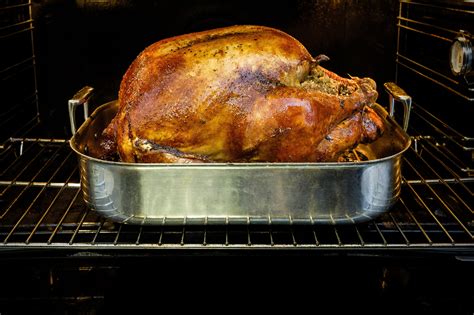How To Roast a Turkey in the Oven: A Step-by-Step Guide for a Perfect Bird
Thanksgiving, Christmas, or any special occasion – a perfectly roasted turkey is the centerpiece of many celebratory feasts. But achieving that golden-brown, juicy masterpiece can feel daunting. Fear not! This comprehensive guide will walk you through each step, ensuring your turkey is the star of the show.
Preparing Your Turkey for Oven Roasting
Before you even think about preheating your oven, proper preparation is key to a delicious, evenly cooked turkey.
1. Thawing the Turkey Safely
Crucial Note: Never thaw a turkey at room temperature. This creates a breeding ground for harmful bacteria. The safest methods are:
- Refrigerator Thawing: Allow approximately 24 hours for every 4-5 pounds of turkey. This is the slowest, but safest method.
- Cold Water Thawing: Place the turkey in a leak-proof bag and submerge it in cold water, changing the water every 30 minutes. This method is significantly faster than refrigerator thawing.
- Microwave Thawing: Many microwaves have a defrost setting. Follow the manufacturer's instructions carefully, as this method can be tricky and may result in uneven thawing.
2. Preparing the Turkey for Roasting
Once thawed, remove the turkey from its packaging and pat it completely dry with paper towels. This helps the skin crisp up beautifully.
- Remove Giblets: Locate and remove the giblets (neck, heart, liver, and gizzard) from the turkey cavity. These can be used to make gravy later.
- Seasoning the Turkey: This is where you get to unleash your culinary creativity! A classic approach involves rubbing the turkey with softened butter or olive oil, then generously seasoning with salt, pepper, and herbs like sage, rosemary, or thyme. You can also experiment with different spice blends for unique flavor profiles.
Roasting Your Turkey to Perfection
Now comes the main event – roasting the turkey! Follow these steps for optimal results:
1. Preheating the Oven
Preheat your oven to 325°F (163°C). This ensures even cooking and a crispy skin.
2. Trussing (Optional but Recommended)
Trussing your turkey involves tying the legs and wings together to help it cook evenly and maintain its shape. You can use kitchen twine for this. If you skip this step, it's okay, but your turkey might cook a little less evenly.
3. Roasting Time
The roasting time depends on the weight of your turkey. A general guideline is to allow 13 minutes per pound for an unstuffed turkey and 15 minutes per pound for a stuffed turkey. Always use a meat thermometer to ensure the turkey is cooked through. The internal temperature should reach 165°F (74°C) in the thickest part of the thigh.
4. Basting (Optional)
Basting your turkey with pan drippings every 30-45 minutes helps keep it moist and adds flavor. Use a baster or a spoon to carefully baste the turkey, avoiding splashing hot liquids.
5. Resting the Turkey
Once the turkey reaches the safe internal temperature, remove it from the oven and let it rest for at least 30 minutes before carving. This allows the juices to redistribute, resulting in a more tender and flavorful bird.
Tips for a Juicy and Delicious Turkey
- Don't overcook it! Using a meat thermometer is crucial to prevent dry turkey.
- Brining (optional): Brining your turkey overnight in a saltwater solution can help retain moisture and enhance flavor.
- Use a roasting rack: A roasting rack elevates the turkey, allowing for better air circulation and crispier skin.
- Make gravy with the pan drippings: Don't waste those delicious drippings! Use them to make a rich and flavorful gravy to accompany your roasted turkey.
By following these steps, you’ll be well on your way to creating a memorable and delicious roasted turkey that will impress your friends and family. Happy cooking!
